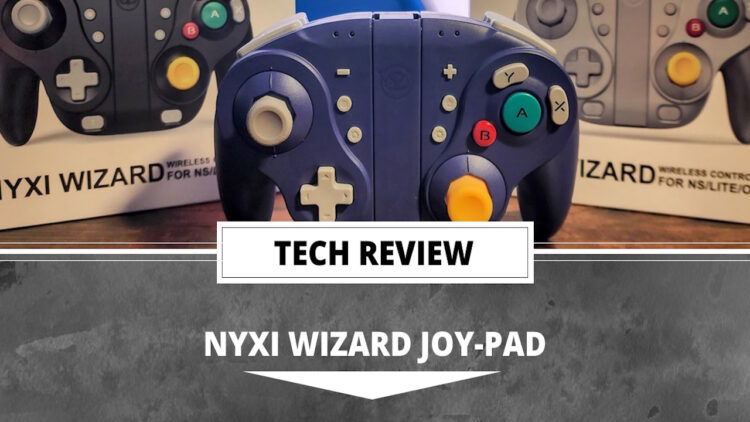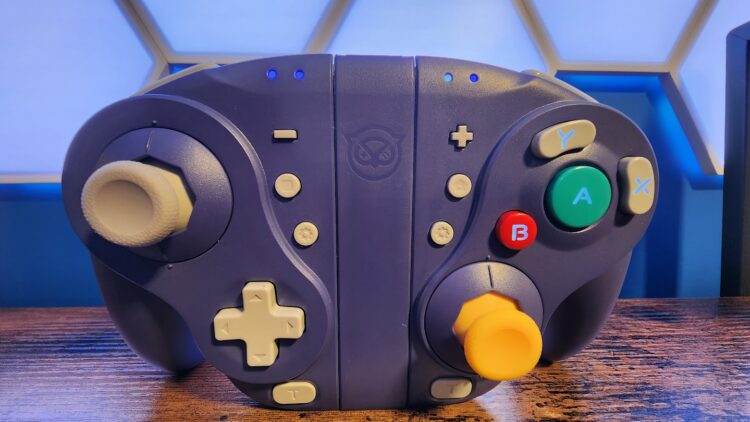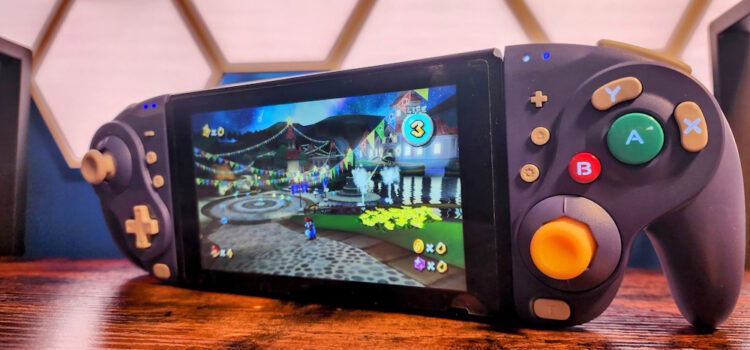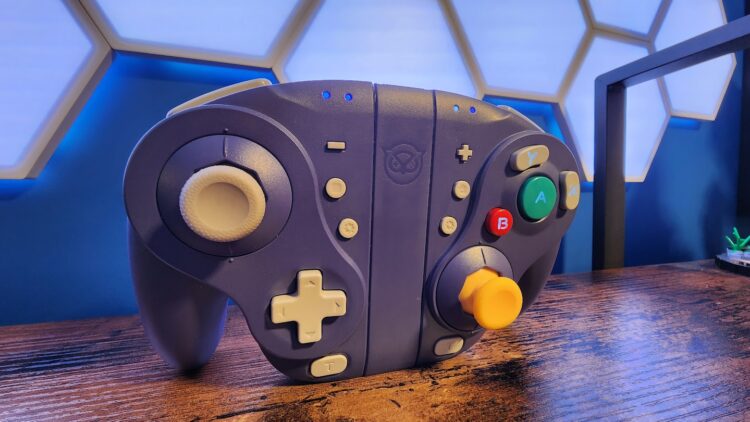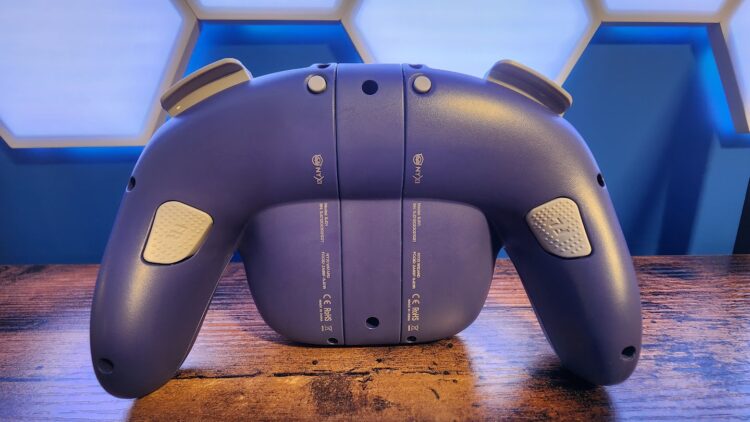When you first glance at the NYXI Wizard for the Nintendo Switch, you might think that you’re looking at the Nintendo Gamecube controller, but it isn’t. Sure, this controller does share some semblance to the iconic controller, but it’s so much more and can even attach to the Switch. I’ve wanted to get access to this controller for a while, but these things are always sold out. But recently, NYXI reached out if we wanted to check out the controller. Finally, having it in my hands and putting it through the paces, this is, IMHO, the Best Gamecube-styled controller for the Nintendo Switch. Of course, I’m not saying that without backing up my claims, so let’s find out what I liked and didn’t like about the NYXI Wizard Joy-Pad controller.
Product Name: Wizard Joy-pad
Product Type: Game Controller
Manufacturer: NYXI
Compatible With: Nintendo Switch & Nintendo Switch OLED
Available: Now
Price: $69.99
Listen up, folks, especially if you’re a fan of the Super Smash Bros. series and play it constantly on the Switch, because a company that isn’t known for its quality controllers (no offense), NXYI, has just knocked it out of the park with its Wizard Joy-Pad for the Nintendo Switch. Things may be a bit awkward if you’ve never had the chance to play on a Nintendo Gamecube controller. It took me some time to get used to it, given that it’s been years since I’ve used one.
What I liked
Unlike the traditional A/B/X/Y layout, the Wizard sports a now massive A button with the B/Y/X buttons spaced around it, just like the Gamecube controller. This is mainly due to the “A” button being the most used button. However, there have been some updates to bring the controller into the modern age, such as the right-hand analog stick nubby has been replaced with a full-sized analog stick, and it’s a welcomed change. I never liked the nubby in the first place and never understood why Nintendo implemented it. The bumper and trigger are now featured on both sides of the controller and are similar to the Nintendo Switch Pro controller giving off a satisfying click when pressed.
There are also two programmable buttons located in the grips that you can assign functions to, and there’s even an adjustable Turbo button. I can’t recall the last time I’ve seen that function on a controller. Haptic Feedback hasn’t been left out, unlike other controllers for the Switch, and can be adjusted in 25% increments, but it doesn’t feel as refined as the Nintendo Switch Pro controller.
The A/B/X/Y buttons are also backlit, which is a great addition, especially if you like gaming where it’s darker than normal, and if you need to glance down, you’ll see them without fumbling around and doing something you otherwise didn’t mean to. It’s worth mentioning that the controller is larger than most controllers, and I appreciate it for someone with large hands. While the button placement did confuse me at first due to the time it’s been since I’ve touched a Gamecube controller, it’s a heck of a lot better than using the Joy-Con or the Switch Pro controller due to the size.
The Wizard includes removable rings for both of the analog sticks that can be swapped out if you don’t like the default classic octagonal ones for something a bit more circular and modern. This controller is perfect for those who play Super Smash Brothers or any other Gamecube game on the Switch. Not to mention the added ability to be able to attach to your Switch, meaning you don’t have to settle for playing Smash with a Joy-Con with this beauty. Playing Metroid Prime: Remastered and with this felt so much better than using either the Joy-Con or the Switch Pro controller; that’s all I’m going to say.
The Wizard features a pair of USB-C ports on the bottom of each controller, which is a blessing and a curse. Seeing more devices utilize USB-C instead of the ancient Micro USB connections is great. However, in order to charge them both, you’ll have to charge both controllers, even in single-controller mode. The connection piece that connects the controllers doesn’t feature any crossover, which is disappointing. In order to charge both, you’ll have two USB-C cables sticking out the back of the controllers. Making it an exercise in frustration if you’re trying to play and charge at the same time. Not to mention that the controller only includes one USB-C cable, nor is there a charging block included.
Lastly, the Wizard also features Hall effect sensor joysticks, something that I’m sure you’ve heard about a lot over the past year or two. The great thing about them is that it is a proven technology that, unlike what we see in the Nintendo Switch Pro, Xbox, or PlayStation controllers, is that it doesn’t use potentiometers that will wear out over time. While Hall Sensor Effort Joysticks use magnets and electrical conductors, they don’t actually touch as they use a magnetic field. This is a technology that was featured in the SEGA Dreamcast, a console that was released 25 years ago, that puts current technology in most gaming controllers to shame. This means the Wizard will never feature joystick drift, a phenomenon that has been plaguing consoles for a number of years.
Weight-wise, the Wizard is a few ounces heavier than the Switch Pro controller but considerably heavier than the Joy-Cons that you may already be using. With the Joy-Cons connected to the Switch, the weight comes in at 14.3 ounces, but with the Wizard attached, the weight moves up to 18.9 ounces or nearly 1.2 pounds. It adds a bit of weight to the controller, which may cause some issues while holding the unit while gaming. Given that the Wizard contains gyro and rumble features, not to mention more plastic, it makes sense that it weighs more.
I’ve used the Wizard for over a week, and I have to say that it has transformed the way I play my Switch on the go. Sure, it’s a decent controller on its own when the Switch is docked. But on the go, I have access to a much larger controller and bigger buttons, and all in all; it’s just a better experience. While I’ve spoken about the Wizard in an on-the-go light, using it with a docked Switch is just as good. I didn’t have any issues once paired with the Switch using the Bluetooth wireless connection.
Lastly, the Wizard comes in three different colors, Black, Platinum, and Indigo. If that seems similar, it should, as they are the same colors as the Nintendo Gamecube consoles.
What I didn’t like
So far, I’ve painted what seems to be a nearly perfect picture of the Wizard. However, there are some flaws with it, starting with the D-pad, which is super stiff. Even after using it non-stop for a week, this thing is still stiff to the point where I have to use some muscle to push it down. It also feels cheap. There are directional arrows on the D-Pad, but if you run your fingers over them, there’s no indentation whatsoever. Then there’s the issue with the programmable buttons in the grips that I’ve accidentally hit during gameplay. The downside to that is if you’ve programmed them, you’re screwed if you press them, as they carry out the assigned function. Maybe they should have been placed higher to avoid hitting them by chance.
Review Disclosure Statement: The Wizard Joy-Pad was provided to us by NXYI for review purposes. For more information on how we review video games and other media/technology, please review our Review Guideline/Scoring Policy for more info.
Summary
If you’ve been looking for a quality Gamecube-style controller for the Switch, you won’t do any better than what NYXI’s Wizard affords you. It’s not perfect, mind you, but it’s a fantastic recreation of a controller that served us faithful so many moons ago and even to this day if you are a Super Smash Bros. player. It’s also one of the best Joy-Con alternatives I’ve used since I’ve owned my Switch. Is it worth the asking price? If you ask me, I definitely think this is the best Gamecube-style controller for the Nintendo Switch. Just keep in mind that it’s not perfect, but it does its job well.
Pros
- Great for playing Gamecube games
- Great for playing Super Smash Bros.
- Seeya nubby
- Recreates that Gamecube controller experience
Cons
- Might be heavier to hold for some
- Super stiff D-pad
- The programmable buttons should be higher up


